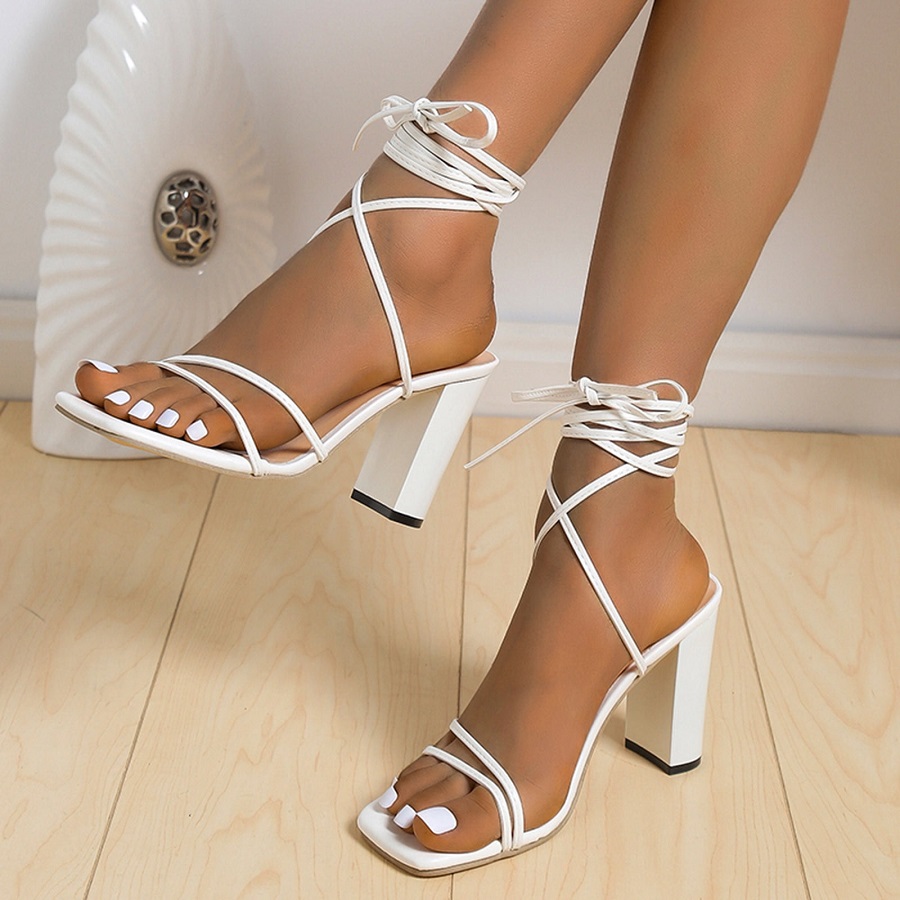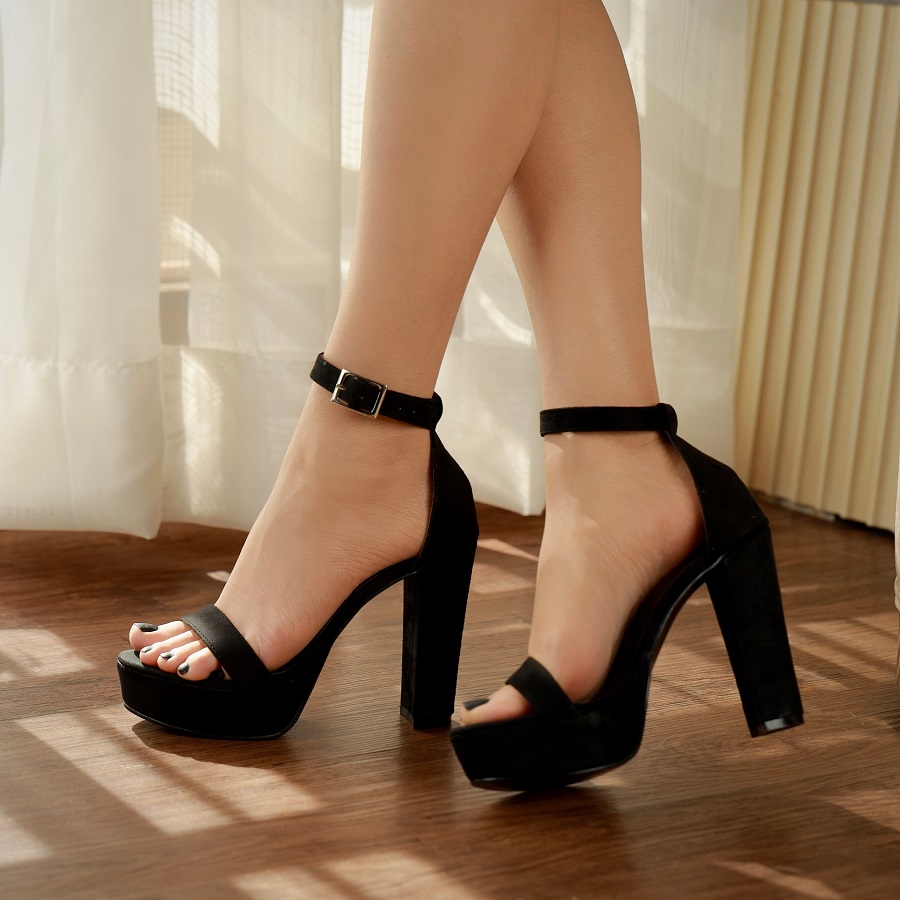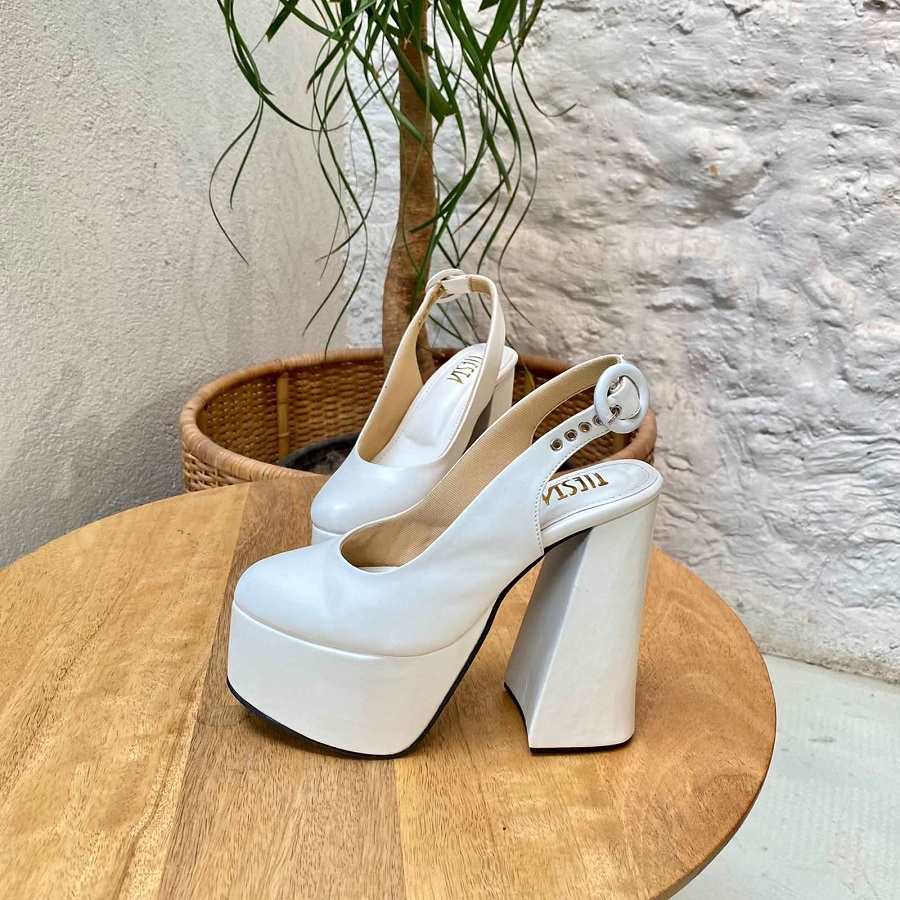The Early Beginnings of High Heels
The history of high heels reaches back to ancient times. Surprisingly, they were not initially a fashion statement nor an exclusive female accessory. In ancient Egypt, murals dating back to around 3500 B.C. depict high heels worn by nobility, possibly to set them apart from the lower classes. Through the centuries, high heels took on various roles and symbolisms in different cultures.
In Ancient Greece, high heels had a part in the performing arts. Actors would wear them to signify social status or character importance on stage. Similarly, in Ancient Rome, high platform sandals known as ‘kothorni’ elevated important figures during important events and festivals. These shoes were not only symbols of status but also had practical uses such as keeping wearers’ feet clean and dry above muddy streets.
The invention of the heeled shoe, as we more closely recognize it today, occurred in the Middle East. The ‘chopine’ was a type of platform shoe that became popular among both men and women in Venice during the Renaissance. Its height could be quite extreme—to the point where wearers required assistance to walk.
High heels stepped into Western Europe as a result of Persian diplomacy in the 15th century. Persian cavalrymen wore heels as a functional tool to help secure their feet in stirrups. When the Persian Shah sent delegates to Europe, the high heel was introduced as a symbol of masculine power and military proficiency, leading to its adoption by aristocratic men seeking to emulate this martial prowess.
Thus, the ‘history of high heels’ isn’t purely a tale of fashion; it is a rich tapestry woven from the threads of functionality, symbolism, and class distinction. From their early utilitarian uses to their association with power and privilege, high heels have walked a complex path to become the fashion staple they are today. As we explore further, we’ll see how they have continuously evolved, reflecting societal changes over time.
 Cultural Significance of High Heels in Different Eras
Cultural Significance of High Heels in Different Eras
From function to fashion, the ‘history of high heels’ has been a journey of cultural significance. Each era has seen a unique relationship between society and these elevated shoes. Among various cultures, high heels symbolized more than just status or style.
In the European Middle Ages, high heels lost some prominence. But with the Renaissance, a revival came. Heeled shoes became artful expressions of the era’s focus on beauty and elegance.
The 17th century Baroque period saw high heels as a courtly trend. King Louis XIV of France famously elevated high heels to a royal accessory. Heels became adorned with intricate patterns and luxurious materials, reflecting the opulence of the time.
During the Enlightenment in the 18th century, practicality came to the forefront. The heel heights reduced as rationality dictated fashion. Men’s high heels slowly disappeared, and women’s footwear started to show more variety.
The Industrial Revolution brought mass-production. High heels became accessible to more than just the wealthy elite. The late 19th and early 20th centuries saw numerous changes in designs, driven by both fashion currents and social movements.
In the roaring 1920s, flappers paired their short skirts with high heels, using fashion to make bold statements about femininity and freedom. Throughout the 20th century, high heels went through peaks and valleys in popularity, often linked to women’s roles in society.
Through each period, high heels carried cultural messages. They evolved from symbols of power to markers of gender identity. They have highlighted shifts in aesthetic preferences and tracked the push-pull between practicality and aesthetic desire. As we step through history, we understand that high heels are not just footwear but a reflection of the times.
High Heels as a Status Symbol Throughout History
The story of the ‘history of high heels’ intertwines with power and status. High heels have long served as a marker of high social standing and wealth. In the 16th century, the European aristocracy viewed them as a status symbol. This was a time when the common folk walked barefoot or wore flat shoes. The elevated position that heels provided was metaphorical and literal.
In Persia, warriors viewed heels as a sign of virility and combat readiness. Their use spread to Europe, influencing military attire. It became fashionable for European men to don heels, signifying strength and nobility. The French monarchy, most notably Louis XIV, made high heels with intricate designs popular. Such heels were so exclusive they became known as ‘Louis heels.’
High heels lost some favor with men as practicality grew in the 18th century. Women continued to embrace them, transforming the heel into a female symbol. The association with high social standing persisted. Fancy heels were a luxury few could afford.
During significant periods such as the post-World War eras, high heels regained momentum. They became a sign of prosperity and moving away from wartime austerity. Heels symbolized a return to glamour and luxury.
Today, high heels carry traces of their historical role as a status symbol. They appear at important life events, carrying an air of sophistication and prestige. The ‘history of high heels’ shows us how footwear can reflect social hierarchies across time.
The Evolution of High Heel Designs
The ‘history of high heels’ reveals a dynamic evolution in their design. Early heel designs were practical. They helped keep a rider’s foot in the stirrups. But as time passed, high heels became elaborate fashion statements.
Surprisingly, the 17th century brought elaborate forms to high heels. Court fashion in France endorsed heels as stylish necessities. Heels showcased ornate details like bows or buckles to display wealth and taste.
By the 18th century, the shape of high heels changed. They turned slimmer and more delicate, reflecting refined tastes of the era. The heels of women’s shoes became more varied, ranging from wide to narrow shapes.
The Industrial Revolution was pivotal for high heels. It allowed mass production, making them accessible to a broader audience. Consequently, tons of styles emerged, providing a mix of practicality and fashion.
The 20th century saw a fascination with new heel types. Stilettos, introduced in the late 1950s, became a symbol of feminine allure. Changes in heel shape and height continued to reflect societal norms and changes.
In each decade, designers have created new high heel styles. They’ve combined aesthetics with innovation, leading to bold shapes and sizes. Some examples include platform heels, wedge heels, and even deconstructed heels.
Today, high heel designs keep pushing boundaries. They combine traditional styles with cutting-edge technology. Comfort is also a more prominent factor, accommodating health considerations without sacrificing style.
Throughout their design ‘history’, high heels have balanced function with fashion. They’ve moved from cultural symbols to artistic expressions. Their continuous reinvention shows our enduring fascination with this iconic footwear.
Famous Figures and Their Influence on High Heels
The ‘history of high heels’ isn’t complete without mentioning key figures. These individuals shaped the heel’s journey. They turned high heels into powerful fashion symbols.
One can hardly discuss the impact of famous figures without highlighting Marie Antoinette. Her taste for extravagant fashion, including high heels, was well-known. She set trends in the French court and beyond.
Then there’s King Louis XIV of France, the ‘Sun King’. His love for high heels with ornate designs influenced European fashion dramatically. He boosted the heel’s link with power and status.
In the modern era, celebrities have a significant influence. Consider Marilyn Monroe. She often wore stiletto heels, which became a sign of glamour and femininity. Her choice in heels had a lasting effect on shoe fashion.
Film stars like Audrey Hepburn and style icons such as Princess Diana carried this forward. Hepburn’s elegant choice of footwear expanded the heel’s appeal. Princess Diana’s heels were often discussed for their style and elegance. They added to the narrative that linked heels with grace and class.
More recently, pop stars like Lady Gaga have pushed heel designs to new extremes. Her bold fashion choices reflect individualism and confidence.
These figures highlight the ‘history of high heels’ as more than just fashion. They show us how individuals can steer a cultural symbol. Heels have evolved with each figure’s unique influence and the changing times.
Gender and High Heels: A Changing Perspective
The ‘history of high heels’ is deeply tied to gender perceptions. Historically, both men and women wore high heels, signifying various positions and roles in society. However, the link between heels and femininity did not cement until much later.
In the early 20th century, men’s fashion largely abandoned high heels. This left women to embrace them as an integral part of their wardrobe. The shift paralleled larger societal changes, where women began claiming more public and visible roles. Wearing high heels became a statement of empowerment and elegance for women, even as debates on gender norms continued.
By the mid-20th century, high heels were icons of female fashion. Heels grew synonymous with a woman’s attire, further entrenching into gender identity. Films and fashion industry played a part. They showcased heels as essential to the feminine allure.
The feminist movements of the 1960s and 1970s questioned this norm. They critiqued the idea of heels as a tool to increase women’s appeal to men. Instead, some women chose to wear heels for their own pleasure and expression. Thus, the meaning of high heels broadened.
Today, the conversation around high heels and gender continues to evolve. There’s a growing acceptance of heels being worn by anyone, regardless of gender. Fashion icons and celebrities often blur traditional lines, wearing heels as an expression of style, not just gender. The ‘history of high heels’ today reflects a society in motion, embracing fluidity over fixed norms.
The Role of High Heels in Fashion Today
The history of high heels tells a story of evolution. Today, these iconic shoes are a staple in fashion, symbolizing style and sophistication. Designers continue to innovate, merging past influences with modern trends. High heels now vary widely in designs, covering a spectrum from the classic stiletto to chunky platforms. They often reflect the designer’s artistic vision and the wearer’s personal style.
High heels also play a crucial role on runways and in fashion shoots. They shape the way clothing is displayed and perceived, adding height and poise to the models. In many cases, they are more than shoes; they are a statement piece, sometimes overshadowing the outfit itself. Heels can transform an entire look, giving an instant lift to both stature and confidence. They serve as a crucial accessory in high fashion, often completing the vision of a fashion designer’s collection.
Beyond couture, high heels have also entered everyday wardrobes. From office wear to party outfits, they elevate any ensemble. For many, slipping into a pair of high heels signals readiness for professional settings or special occasions.
Within the ‘history of high heels’, we now see a greater emphasis on comfort. Innovations in design attempt to provide style without sacrificing the wearer’s comfort. This shift acknowledges the health concerns that historically accompanied high heel wear. Brands are more conscious of the balance between beauty and well-being, reflecting an evolved understanding in society.
In sum, high heels continue to captivate and command a significant place in today’s fashion world. They’ve maintained their allure across the centuries, embodying both a legacy of the past and the ever-changing definitions of modern style.
The Impact of High Heels on Health and Society
The ‘history of high heels’ has always been more than just a fashion narrative. It encompasses both health implications and societal shifts. Initially designed for functionality, high heels have evolved into fashion symbols, but this progression has not come without concerns. Let’s delve into this aspect.
For a start, health experts have voiced significant worries regarding the long-term wear of high heels. The elevation of the heel can lead to postural changes, placing stress on the lower back and causing pain. Frequent wearers may also experience foot issues, such as bunions, hammertoes, and nerve damage. There is a push in the footwear industry to address these health matters, with ergonomic designs gaining traction.
High heels also symbolize shifting social dynamics. Historically, they were worn by both men and women to denote status and power. Over time, the association shifted, making heels predominantly a female accessory. This transition mirrors changes in gender roles and perception. Heels have become a contentious point in gender equality discussions, balancing between notions of empowerment and impracticality.
Moreover, the workplace has seen its share of debates on high heels. Some professions expect women to wear them as part of a standard dress code, sparking controversies over freedom of choice versus professional expectation. This has raised awareness and led to changes in some corporate cultures, promoting a work environment based on inclusivity rather than traditional norms.
In popular culture, high heels continue to serve as a mark of glamour and style. Influencers and celebrities don high heels in a show of confidence and identity, often inspiring fans. However, there’s an ongoing conversation on body positivity and self-acceptance, questioning the pressure to conform to beauty standards.
The ‘history of high heels’ reflects their marked impact on health and society. We see a balance being sought today—between the love for the aesthetic appeal of heels and a movement towards holistic well-being and comfort. It’s clear that as our society progresses, the story of high heels will continue to evolve, intertwining with the narratives of culture, health, and social norms.

